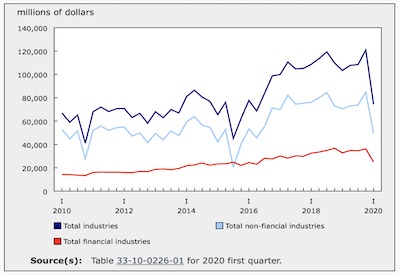Agility: Building Experience
April 19 2016
As the story goes, Thomas Watson (the founder of IBM) once called an employee into his office. This employee had just made a mistake that cost the business $64,000. A hefty sum back in the early days of the company. The employee stood in front of Watson’s desk, apologized and said he fully understood that he would be relieved of his duties.
Watson responded by saying, “Fire you? Why would I do that? I just spent $64,000 on your education!”
This story comes from one of the icons of American business. Yet most Canadians believe that Americans are quick to fire people rather than build them to be more resilient.
The truth is quite the opposite: the success of America is in its unique cultural belief in building talent, letting them learn and improve the overall business.
It is hard to imagine that an attack back in the 20th century had more of a dramatic effect on Americans than the brutal attack of September 9, 2011. But on December 7, 1941, an entire nation bounced with everything they could muster on Pearl Harbour. Although fewer Americans were killed (2,403) during Pearl Harbor, the Japanese took out much of the protective American fleet, their intelligence network and their Pacific defence. It was a surprise attack that also hit British Hong Kong, U.S. Philippines and Guam simultaneously. What made it worse was that behind the attack was the formidable samurai Japanese. A society well-trained to take no prisoners and to sacrifice all. A society where honour was more important than death. They appeared to be an unstoppable force sweeping through China and much of Southeast Asia.
Japan’s plan was to knock out the American Pacific fleet, thus keeping the U.S. out of the war. The first error was to assume that this blow would keep America out. The second error was the Japanese did not account for how quickly America could rebuild its fleet to reclaim the Pacific Ocean.
Pearl Harbor made America more determined. The next major sea battle took place six months later at a small island called Midway. This battle, in hindsight, was the one that decided the fate of Japan in the Pacific. The Japanese planned once again to concentrate their efforts on attacking and destroying the remaining U.S. fleet.
The battle and the war were decided less by techniques and more by opposing cultures. Two key differences of culture separated the Japanese from the Americans.
The first was authority. The Japanese were taught to do as they were told. Under no circumstances were they to alter their course or question their superior. This made a force in battle, where they never backed down. Conversely, Americans were told their objectives and were expected to alter their course to meet those objectives, or retreat if they were unattainable.
From a business perspective, Americans gave their ship captains the required training and allowed them to utilize it to the fullest. They used the full resources of their employees. At Midway, the ability to improvise led to the victory of the Americans. The Japanese continued to do what they were told, even when they could see it was wrong. The Americans improvised.
The second key cultural element was in the result of the battle. Not only did Japan lose two aircraft carriers (the key to dominance was determined by who controlled of the air), but their samurai culture dictated that the captain had to go down with the ship. Meanwhile, American captains left with their crews to fight again on another ship. Americans were gaining insight while the Japanese were losing their best captains. Proceeding from the battle of Midway, more and more battles put experienced American captains against their inexperienced Japanese counterparts.
In the end, it could be argued that the results of the war were, in part, based on different cultural attitudes. Americans learned from their mistakes while the Japanese buried their mistakes.
Building agility into your workforce is about developing “combat” experienced employees and allowing them the freedom to apply that experience on the front line.
Rick McCarten IS VP, Operations, Electro-Federation Canada.
Read more in Canadian Electrical Wholesaler by Rick McCarten
Should Distributors Sell Robots?
Agility: Knowing Your Competition
The Big Picture
Could our Industry Lose the Lighting Market?
Adapting to the Future with Young Talent
If Your Customers Can See More, You Might Want to Help Them See Even Further
Health and Sciences Could take a Lesson from the Electrical Industry
Change is About to Hit Our Industry
Challenges of the Digital Age
Agility: The Customer Landscape
Agility is the New Lean: Alexander Defeats the Persians
Agility is the New Lean
The Gap Between “Us” and “Them”
Our Industry Needs to Help Canada Skate to Where the Puck is











